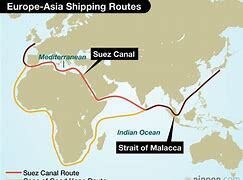Contingency plans, new surcharges emerging ahead of expected strikes in US
NewsWith a potential strike by the International Longshoremen’s Association (ILA) approaching, industry stakeholders are implementing contingency plans.
Recent attacks by Iranian-backed Houti rebels on Maersk Line, CMA CGM, Hapag-Lloyd and Mediterranean Shipping Company (MSC)-operated containerships in the Red Sea have thwarted hopes that ‘Operation Prosperity Guardian’ – a coalition of naval ships led by the US – would make the area safer and allow transits of the Suez Canal to return to normal.

In the past week, the vessel MAERSK HANGZHOU (15,000 TEU) has been attacked twice (on 30 and 31 December) leading the world’s second largest shipping line, which on December 24 starting rerouting vessels via the Suez Canal, to once again suspend transits. A customer advisory said: “We have made the decision to pause all transits through the Red Sea and the Gulf of Aden until further notice.”
Elsewhere, Hapag-Lloyd (until at least 8 January) and MSC (indefinitely) are continuing to route ships that would have used the Suez Canal via the Cape of Good Hope.
To date, some 20 ships have been attacked by the Yemen-based Houthi rebels and calls from governments across the world for the United Nations to intervene have increased. A directive issued by the governments of Australia, Bahrain, Belgium, Canada, Denmark, Germany, Italy, Japan, Netherlands, New Zealand, Singapore, the UK and the US just prior to a UN emergency security council meeting warned: “They [the attacks] are illegal, unacceptable and profoundly destabilising. There is no lawful justification for targeting civilian shipping and naval vessels. They threaten innocent lives from all over the world and constitute a significant international problem that demands collective action.”
The disruption has led to ocean carriers imposing surcharges and raising freight rates to help compensate for the additional operating costs, including the need to phase in more ships to maintain weekly frequencies on voyages that take up to 10 days longer to complete. For fuel alone, the round voyage cost can be up to US$1M higher than a transit through the Canal. Obviously this is offset to some extent by transit fees of using the Canal not having to be paid.
By subscribing you will have: